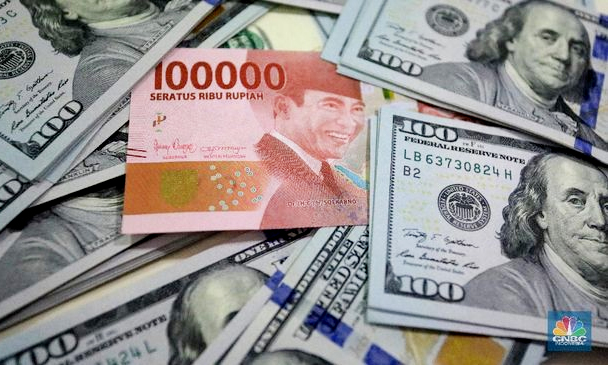Veterans Affairs (VA) mortgage loans have increased exponentially in recent years due to the downturn in the U.S. economy. This economic slump has resulted in banks tightening lending standards for conventional loans. The increase in VA loans is largely due to the fact that they are easier to qualify for than conventional mortgages and are one of the few mortgage options available for qualified borrowers who do not have a down payment.
VA loans often offer lower interest rates than other type of loans and are available for the “full reasonable value” of a given property. Consequently, a down payment is not required as with other government programs such as FHA, which requires a 3.5 % minimum down payment.
So what is a VA loan? VA loans are home mortgages guaranteed by the U.S. Department of Veterans Affairs however they are not a direct lender. The loan is made through a private lender (of your choice) and is guaranteed by the VA as long as guidelines are met. What are the guidelines and who actually qualifies for a VA loan? To follow are the seven basic steps you will need to take to successfully obtain a VA home mortgage loan.
Step One: Determining Eligibility
Most members of the military – veterans, reservists, and members of the National Guard are eligible to apply for a VA loan. The spouses of military who died in active duty or as a result of service-connected disability may also apply. Active duty members qualify after about six months of service.
Reservists and National Guard members must wait six years to apply unless they are called to active duty, where they gain eligibility after 181 days of service. However, during war periods members are generally eligible after 90 days of service. In consideration of your status of service, loan applications can differ. Your VA regional office personnel can assist you with any additional eligibility questions.
After pre-determining your eligibility, the first step for potential borrowers is to obtain a Certificate of Eligibility (26-1880) before applying for a loan. At this juncture, you will need to select an accredited VA loan specialist who will assist you in moving forward in the loan process which includes accessing and submitting this eligibility form online.
Step Two: The Pre-Approval Process
Before embarking on step two of the VA loan process, it is crucial that you have pulled your credit report in advance with all three credit reporting agencies to see where you stand with your FICO credit score. You should thoroughly examine the report for any errors and/or identity theft, taking care of any such issues beforehand. Although Veteran’s Affairs does not require a minimum score for a VA loan, most lenders have internal requirements, asking for a credit score of 620 or higher.
After you have completed this important task, you will provide this information to your VA loan specialist. They can answer any questions that you have and help you with determining the loan amount you are eligible for through a pre-approval process. The pre-approval process is required by most realtors before working with you to find a home. It serves to give you piece of mind and a price range that you can afford based on a pre-approved amount.
To obtain a VA loan, the law requires that:
- The applicant must be an eligible veteran who has available entitlement.
- The loan must be for an eligible purpose.
- The veteran must occupy or intend to occupy the property as a home within a reasonable period of time after closing the loan.
- The veteran must be a satisfactory credit risk.
- The income of the veteran and spouse, if any, must be shown to be stable and sufficient to meet the mortgage payments, cover the costs of owning a home, take care of other obligations and expenses, and have enough left over for family support.
Your experienced VA loan specialist will be able to further discuss specific income and other qualifying requirements. According to the VA Loan Quick Guide, the VA loan limits generally do not exceed $417,000 (exception in maximum limits with VA Jumbo loans in designated High-Cost counties – calculations can vary).
Step Three: Decide on a Home & Make an Offer
Select a realtor to work diligently with you to find your desired home. After finding the home based on your personal and financial criteria, you will make your offer. The offer should not be too low or too high, as you want to stay ahead of the pack in bidding but not risk overpaying for the property. After making the offer, you will be required to place a deposit down ($500.00 is customary) on the property.
In placing your offer, be aware that there are certain fees such as brokerage and lender fees, commissions, or buyer-brokerage fees that the seller may have to absorb as they are disallowed by the VA to be charged to the veteran buyer. This amount may need to be factored into the offer/purchase price to be acceptable to the seller.
Step Four: Signing the Purchase Agreement
It is recommended that two contingency provisions: 1) upon financing and 2) upon inspection, be inclusive or amended in the purchase agreement. Fact: A “pre-qualification” letter does not necessarily guarantee financing so you must be covered in the event that it does not go through. However, if you have proceeded as directed in Step Two and you are “pre-approved,” you should be fine. The pre-approval process is a more extensive check performed by your VA loan specialist on your financial background and credit rating. After completion, your lender will provide a conditional commitment on the amount of your loan.
A home inspection can be a critical contingency provision, giving you the option to back out if repairs are costly and substantially decrease the fair market value of the property. Fact: VA fee appraisers are not required to step on the roof for inspection nor do they have the specialized knowledge that a certified home inspection can provide.
The VA appraiser’s job is to ensure that the home lives up to minimum property requirements. He/she establishes fair market value for the home and a Certificate of Reasonable Value is issued. However, this VA appraisal does not take the place of a detailed inspection of the property. Although optional, it is highly recommended that your offer be contingent upon a detailed home inspection.
Step Five: Offer Accepted
Contact your lender immediately and let them know that your offer was accepted. Congratulations! You are on your way to homeownership! If you have not done so already, you will need to provide the last two or three years of tax returns, pay stubs and bank statements. He/she will help you complete your application and submit it for processing and approval.
Subsequently, the lender will order a VA appraisal and a certified home inspection. Your VA loan specialist will complete the appraisal and perform a complete review and verification of your credit, income and assets to give a “clear to close.” This will initiate the date, time, and place where you will close to sign all necessary documentation to have the title transferred to you.
Step Six: VA Funding Fees
The VA funding fee is an essential component of the VA Home Loan Program. This basic one-time funding fee must be paid to the VA by all but certain exempt veterans. First-time users of the VA loan benefit program with no down payment require a 2.15% fee. A down payment of at least 5 percent but less than 10 percent requires a 1.5% fee, and a down payment of 10% or more requires a 1.25% fee.
For subsequent users of the VA loan benefit, no down payment requires a 3.3% fee, and a down payment of at least 5 percent but less than 10 percent requires a 1.5% fee. And a down payment of 10% or more requests a 1.25% fee.
The category of Reserves/National Guard first-time users with no down payment requires a 2.4% fee. A down payment of at least 5 percent but less than 10 percent requires a 1.75% fee, and a down payment of 10% or more requires a 1.5% fee. For subsequent users for the category of Reserves/National Guard, no down payment requires a 3.3% fee. A down payment of at least 5 percent but less than 10 percent requires a 1.75% fee, and a down payment of 10% or more requires a 1.5% fee. The funding fee may be paid in cash or it may be included in the loan.
The following persons are exempt from paying the funding fee:
- Veterans would be entitled to receive compensation for service-connected disabilities if they did not receive retirement pay.
- Veterans would be entitled to receive compensation for service-connected disabilities if they did not receive retirement pay.
- Surviving spouses of veterans who died in service or from service-connected disabilities (whether or not such surviving spouses are veterans with their own entitlement and whether or not they are using their own entitlement on the loan).
More good news! Unlike FHA and conventional loans (with less than 20% down), VA loans do not require mortgage insurance.
Step Seven: Approval & Closing
If your lender is authorized for automatic processing under VA’s Lender Appraisal Processing Program (LAPP), upon receipt of the VA appraised value determination the loan can be approved and closed without waiting for VA review. For loans that must be further reviewed by the VA, the lender will send the application to the local VA office, which will notify the lender of its decision.
After receiving VA approval, you (and your spouse) will attend the loan closing. Your lender or closing attorney will go over the terms of the loan and its requirements and where and how to make the monthly payments. You will sign all necessary documentation and the property will then be transferred to you. You have completed the seven steps to getting a VA loan and are now a homeowner!
VA Loan Program Benefits – Now and in the Future
The VA loan program is effectively the U.S. government’s and the American people’s way of saying “thank-you” to those who are actively serving or have served in the military. The benefits of the VA loan program extend beyond getting a home loan, as they can also be used for refinancing and fixing up an existing home.
Another advantage of a VA loan is in the assistance offered to borrowers who might be struggling. If the borrower of a VA loan cannot make their mortgage payment, the VA will negotiate on behalf of the borrower. They have a dedicated nationwide staff committed to helping veterans who are experiencing financial difficulties. These financial counselors can help borrower s negotiate repayment plans, loan modifications, and other alternatives to foreclosure.
We are keenly aware that many of our troops will be returning from overseas in the near future and that there are veterans who have served our country in the past now looking for a home. Be assured that VA-accredited lenders are honored to work on your behalf, in financing your home and the bright future that you and your family so richly deserve.




